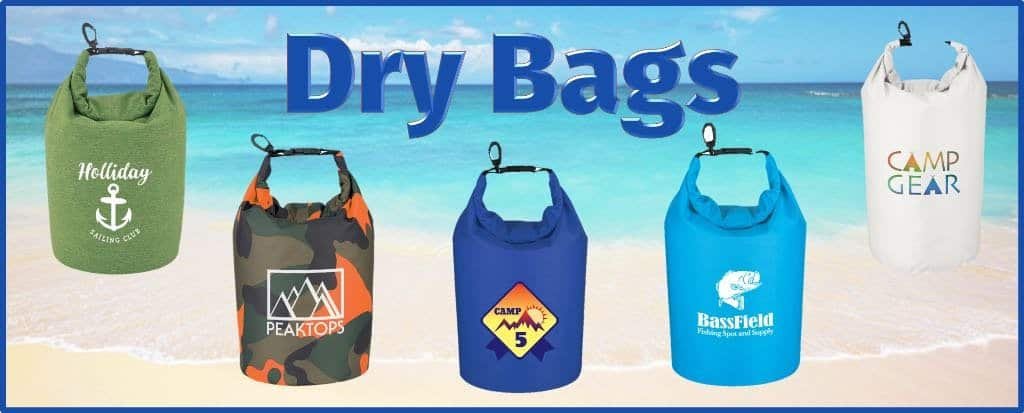
Dry bags are a staple for outdoor enthusiasts, but how waterproof are they really? Let’s investigate the truth behind the waterproof claims of dry bags.While dry bags are designed to be highly water-resistant, their ability to be 100% waterproof can vary based on factors such as material, construction, and usage.
Understanding Dry Bag Materials
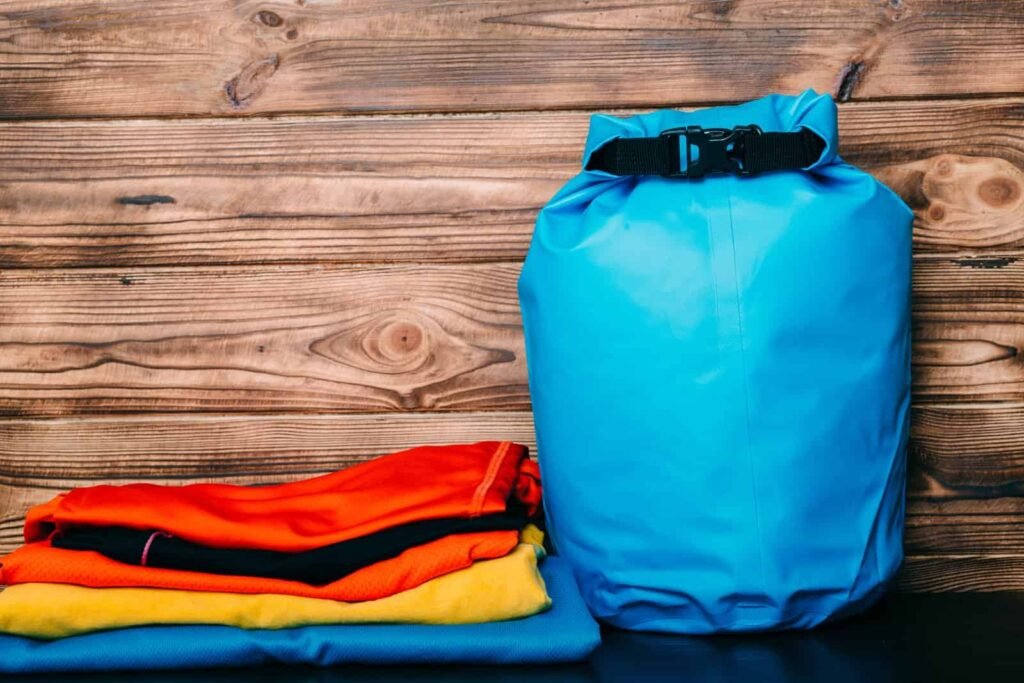
Balancing Weight and Protection
Nylon is another common material for dry bags, prized for its lightweight nature and decent water resistance when treated with waterproof coatings. This part explores the types of nylon used, such as ripstop nylon, and their applications in dry bags. It also covers the balance between weight and durability that nylon offers, making it ideal for activities where weight saving is crucial.
Sustainable and User-Friendly Material
Thermoplastic Polyurethane (TPU) is increasingly used in dry bags for its eco-friendly profile and flexibility. This section highlights TPU’s advantages, including its elasticity, resistance to oil and grease, and lower environmental impact compared to PVC.
Enhancing Water Resistance
Beyond the base materials, coatings and treatments play a significant role in a dry bag’s waterproofing. This part examines common coatings like silicone and polyurethane, detailing how they enhance the water resistance of materials like nylon or canvas and the factors that affect their longevity and effectiveness.
Trade-Offs Between Thickness and Usability
The thickness of the material used in dry bags affects both their durability and usability. This section analyzes how thicker materials offer better protection but can increase the weight and reduce the flexibility of the bag. It provides guidance on choosing the right thickness based on the intended use, balancing protection with portability.
Combining the Best of Different Materials
The latest innovations in dry bag materials often involve hybrid approaches, combining different fabrics and coatings to optimize performance. This part discusses the emerging trends in hybrid materials, their benefits, and potential applications in dry bags, offering insights into the future of waterproof gear technology.
Sealing Mechanisms and Closure Types
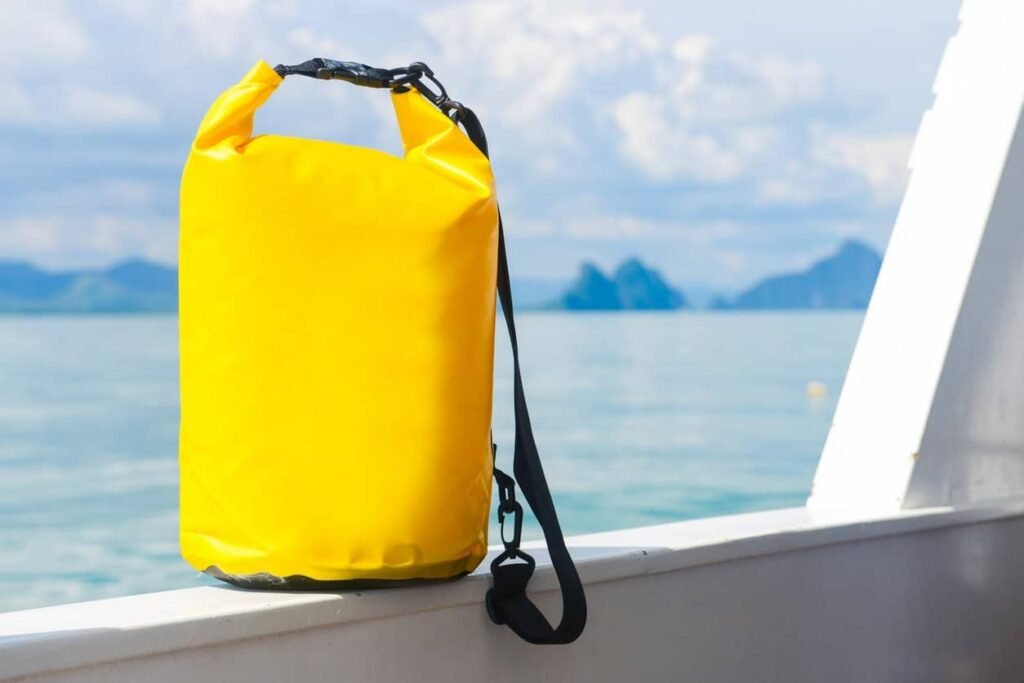
Effectiveness of Roll-Top Design for Dry Bags
Roll-top closures are a staple in dry bag design, known for their simplicity and effectiveness in sealing out water. This section explores the mechanics of how roll-top closures work, including the importance of rolling the top correctly and securing it to create a watertight barrier. It also discusses the advantages and potential limitations of this design, especially in situations involving prolonged submersion or extreme conditions.
Balancing Accessibility and Water Resistance
Zipper seals, including traditional zippers and waterproof zipper designs, offer an alternative closure method for dry bags. This part delves into the types of zipper seals used in dry bags, their waterproofing capabilities, and the trade-offs between convenience and water resistance. It covers best practices for maintaining zipper integrity and avoiding common issues like jamming or wear.
High-Performance Closure for Enhanced Protection
TIZIP waterproof zippers represent a more advanced sealing technology in dry bags. This section examines the construction and functionality of TIZIP zippers, their superiority in creating airtight and watertight seals, and their applications in high-end dry bags.
Innovative Approaches to Dry Bag Sealing
Hybrid closure systems in dry bags often combine different sealing mechanisms to maximize waterproofing and ease of use. This part explores the innovative designs that integrate roll-top closures with zipper seals or other mechanisms, discussing how these hybrid systems aim to provide both security against water ingress and convenient access to bag contents.
Limitations and Vulnerabilities
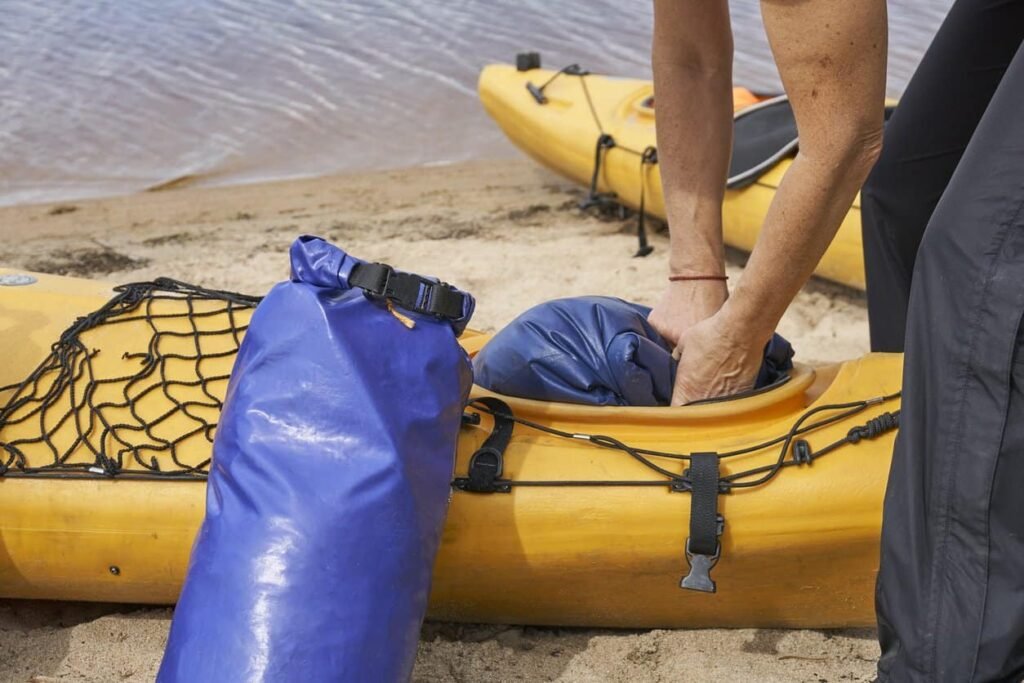
Challenges of Keeping Dry Underwater
This section addresses the performance of dry bags when fully submerged for extended periods. It discusses how most dry bags are designed for splash or rain protection and may not withstand prolonged underwater exposure, explaining the potential risks of water seepage in such scenarios and suggesting best practices to mitigate these risks.
Effects of External Forces on Waterproofing
The impact of external pressure, such as being tightly packed or compressed, can affect a dry bag’s waterproof integrity. This part examines how compression can lead to weakened seams or closures, providing insights into proper packing techniques and the importance of avoiding excessive force or weight on the bag.
Longevity Challenges in Rugged Conditions
Regular use, especially in harsh outdoor environments, can lead to wear and tear in dry bags. This section explores common areas of deterioration, such as abrasions, seam stress, and material fatigue, offering tips for maintenance and repair to extend the life of the dry bag.
Temperature Sensitivity of Materials and Seals
The performance of dry bags can vary in extreme temperatures. This part discusses how materials like PVC or TPU may react to very high or low temperatures, potentially affecting the bag’s flexibility, sealing capability, and overall waterproofing. It includes advice on selecting dry bags suitable for specific climate conditions.
Proper Usage and Care
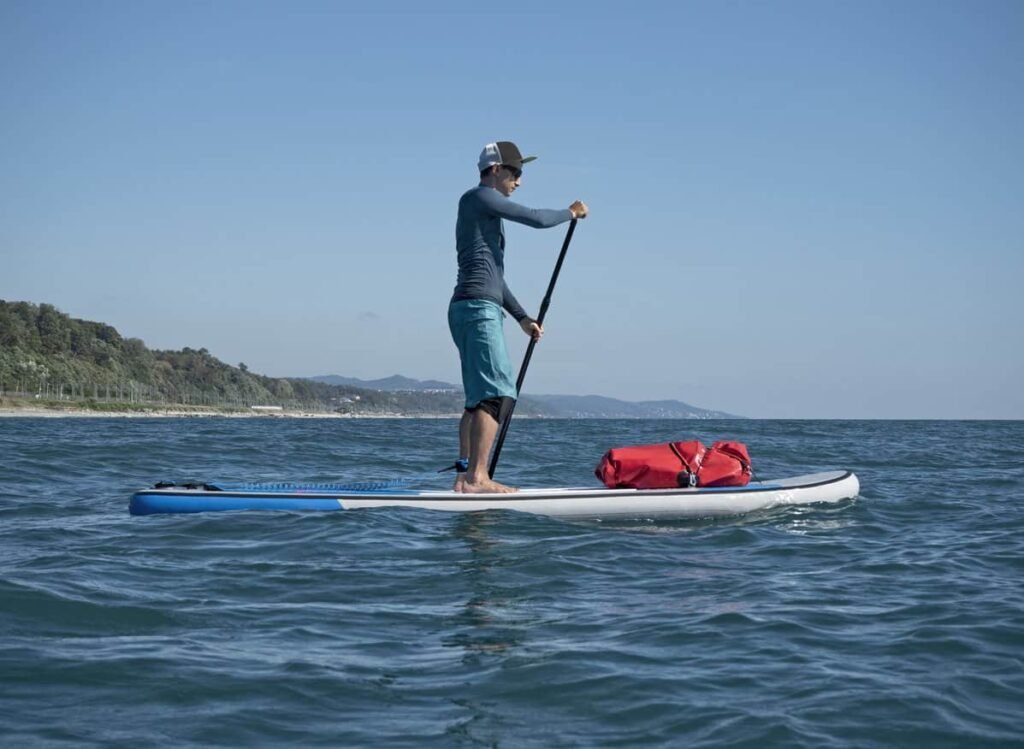
Maximizing Waterproofing Through Smart Packing
This extensive section focuses on the best practices for packing a dry bag to ensure optimal waterproofing. It covers the importance of evenly distributing weight, avoiding overfilling, and correctly rolling or sealing the closure. The guide includes step-by-step instructions on how to pack various items, from clothing to electronics, and tips for maintaining easy access to frequently used items while keeping the bag’s integrity intact.
Preserving Waterproof Qualities Through Careful Upkeep
Regular maintenance and proper cleaning are essential to preserving the waterproof qualities of a dry bag. This comprehensive section provides a detailed guide on cleaning methods suitable for different materials, addressing common stains, odors, and dirt. It also discusses the importance of thorough drying before storage, checking for damages, and timely repairs to prolong the bag’s lifespan and functionality.
Ensuring Durability During Off-Seasons
Proper storage of dry bags when not in use is crucial for maintaining their condition. This part offers advice on long-term storage solutions, focusing on preventing material degradation, fold marks, or creases that could compromise waterproofing. It includes tips on storing dry bags in cool, dry places, avoiding exposure to direct sunlight or extreme temperatures, and methods for folding or rolling bags to minimize stress on materials.
Testing and Waterproof Ratings
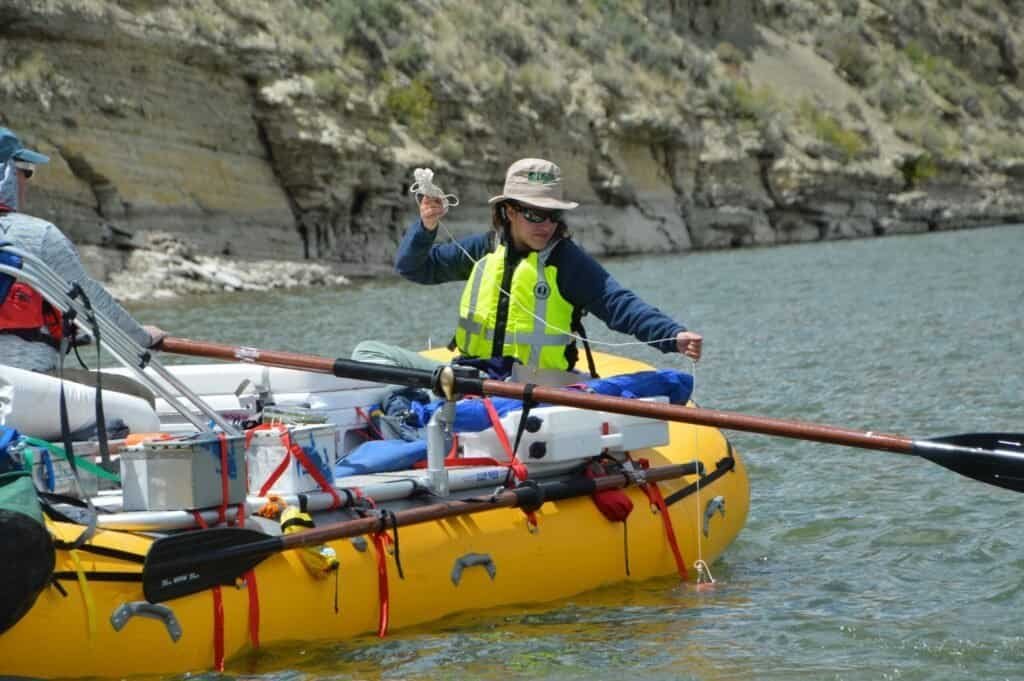
Decoding the International Protection Marking System
This section breaks down the IPX (Ingress Protection) rating system commonly used to classify the level of water resistance in dry bags. It explains what different IPX levels mean, such as IPX4 (splash-resistant) to IPX8 (suitable for continuous submersion), and how these ratings are determined through standardized testing methods. The guide helps readers interpret these ratings to choose a dry bag suitable for their specific needs.
Behind-the-Scenes of Dry Bag Waterproof Tests
This part delves into the laboratory testing procedures that dry bags undergo to receive their waterproof ratings. It covers the various tests, such as immersion tests, pressure tests, and seam integrity checks, providing insights into what these tests reveal about a bag’s waterproof capabilities and durability.
Assessing Waterproofing in Practical Scenarios
In addition to laboratory tests, field testing in real-world conditions is crucial for evaluating the effectiveness of dry bags. This section discusses the importance of field tests, including user experiences and anecdotal evidence from outdoor enthusiasts, to understand how dry bags perform in various environments like heavy rain, boating, or hiking.
The Impact of Care on Water Resistance
Proper maintenance plays a significant role in sustaining the waterproof efficiency of dry bags. This part offers comprehensive advice on maintaining the waterproof quality over time, addressing common issues like wear and tear, exposure to elements, and how to properly care for and repair bags to preserve their IPX ratings.
Clarifying Common Misunderstandings About Waterproof Ratings
This section aims to clear up common misconceptions about what waterproof ratings imply. It addresses misunderstandings like equating higher IPX ratings with overall better quality or misconstruing what certain ratings mean in practical terms, helping readers make more informed decisions based on accurate interpretations of these ratings.
Advanced Waterproofing Technologies
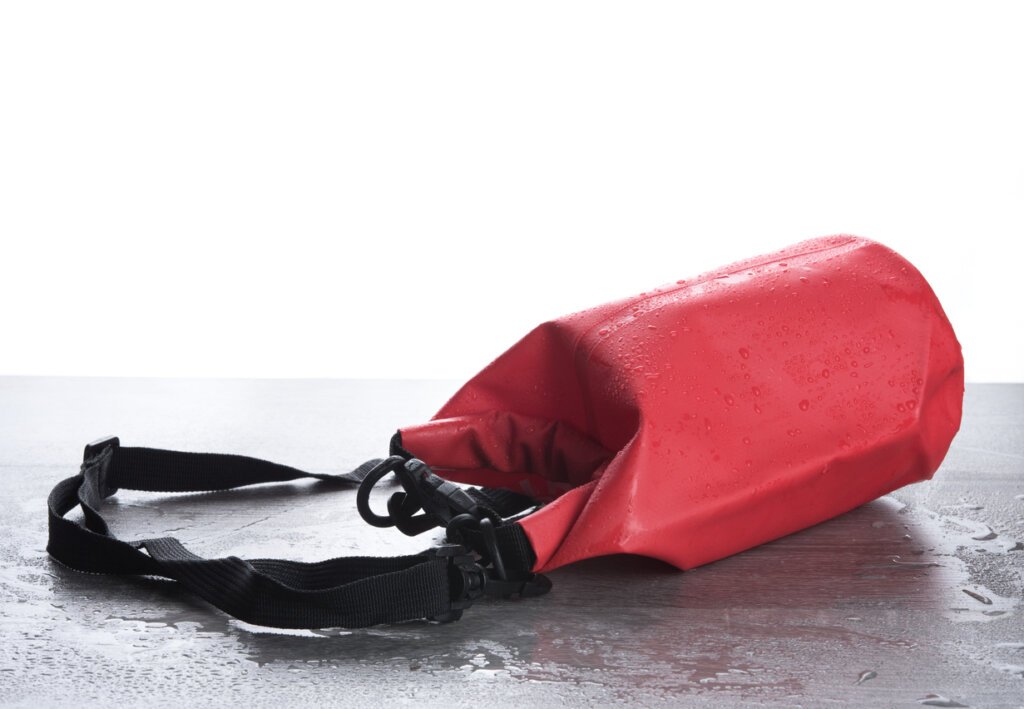
Revolutionizing Waterproofing at the Molecular Level
Nano-coating technology represents a significant advancement in waterproofing for dry bags. This section explores how nano-coatings work, creating an ultra-thin, water-repellent layer on materials, enhancing their waterproof capabilities without compromising flexibility or breathability.
Ensuring Integrity at Every Joint
The weakest points in any dry bag are often its seams. This part delves into the latest technologies in seam sealing, such as heat welding and advanced adhesive techniques. It examines how these methods provide stronger, more durable seals, significantly reducing the chances of water penetration and discussing the long-term benefits and maintenance considerations of these advanced sealing methods.
Elevating Closure Technology for Superior Protection
Waterproof zippers have been a critical component in dry bags, but recent enhancements have taken their effectiveness to new heights. This part explores the latest developments in waterproof zipper technology, including improvements in seal design, materials used, and durability under stress.
Combining Durability with Intelligent Design
The integration of smart fabrics into dry bag manufacturing is an emerging trend. This section covers how these innovative fabrics can change properties in response to environmental conditions, such as tightening weave patterns or increasing water repellency in wet conditions. It discusses the potential of these materials to adapt to different scenarios, offering enhanced protection and versatility.
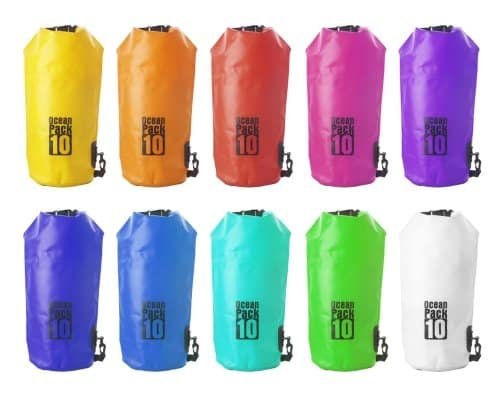
FAQ
Q1:How accurate are IPX ratings in predicting dry bag performance in real-world conditions?
A:This answer explores the correlation between IPX ratings and actual performance, discussing factors that may affect a dry bag’s effectiveness in real-world scenarios.
Q2:Can a high IPX-rated dry bag be used for scuba diving or deep-water activities?
A:Understanding the limitations of dry bags in underwater activities like scuba diving, this response clarifies what activities are suitable for different IPX-rated bags.
Q3:How can I test my dry bag’s waterproofing at home before a trip?
A:Simple methods for homeowners to test the waterproofing effectiveness of their dry bag, ensuring confidence in its performance for an upcoming trip.
Q4:Does frequent folding and rolling of a dry bag weaken its waterproofing over time?
A:Discussing the impact of regular folding and rolling on the waterproofing integrity of a dry bag, including tips for minimizing potential damage.
Q5:What should I do if my dry bag fails a waterproofing test?
A:Steps to take if a dry bag fails a waterproofing test, including assessing the damage, potential repairs, and considering replacement options.
Q6:Are there ways to improve the waterproofing of a dry bag that has a lower IPX rating?
A:Tips and tricks for enhancing the water resistance of a dry bag with a lower IPX rating, potentially extending its usability in certain conditions.
Q7:How often should I check the waterproofing of my dry bag?
A:Recommendations on the frequency of waterproofing checks for dry bags, especially before major trips or after extended storage periods.
Q8:Can repairs on a dry bag restore its original waterproof rating?
A:Exploring whether repairs on a dry bag can bring it back to its original waterproofing level and the effectiveness of different repair methods.
Conclusion
In the realm of dry bags, “100% waterproof” is a nuanced term. While these bags offer significant water resistance, their effectiveness varies based on materials, construction, and usage conditions. It’s essential for users to choose a dry bag that suits their specific needs, and to understand that even with advanced technologies, these bags have limitations, especially under extreme conditions. Proper care and mindful usage are crucial in maximizing a dry bag’s lifespan and effectiveness. Remember, in outdoor adventures, being aware of your gear’s capabilities and limitations is key to a successful and safe experience.

